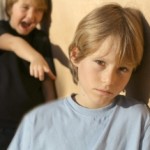This week’s suicide of Lutterworth teenager Hannah Smith is tragic and incomprehensible. Seeking solace and advice online for a common teenage skin condition, she was verbally hounded and bullied by anonymous contributors to the site Ask.fm to the point where she took her own life. Unable to withstand the taunting any more, she let mere words rob her of her future. Those of us who have passed through the horrors of adolescence should be thankful that we found a way to cope.
My parents tried to instill a hardiness in their children, insisting that youthful cruelty was an unavoidable part of growing up, and that learning to ignore the taunts and petty, misguided remarks of my peers was a skill that would serve me well throughout life. They insisted that my thin-skinned friends would be derailed by their own fragility, mistakenly fighting petty battles that could not be won, and that the wiser and more thick-skinned would forge ahead to victory in the game of life.
 “Sticks and stones may break my bones, but names will never hurt me” was the simple mantra to guide this thinking. Its lesson was to teach the difference between injurious and offensive behavior; offensive words did no actual harm, and that without actual harm there was little point in getting all exercised about what other people were saying or doing. Only when real punches were thrown was it time for the grown-ups to get involved.
“Sticks and stones may break my bones, but names will never hurt me” was the simple mantra to guide this thinking. Its lesson was to teach the difference between injurious and offensive behavior; offensive words did no actual harm, and that without actual harm there was little point in getting all exercised about what other people were saying or doing. Only when real punches were thrown was it time for the grown-ups to get involved.
The difference between injury and offence was hard to understand as a child, especially when ‘an offense’ is a criminal term, a punishable breaking of the law; surely ‘offensive’ was similarly criminal, or tending towards the criminal? No, offensive speech might be hurtful or upsetting, but not physically harmful or illegal. Someone yelling “Fatso!” might have upset me, but name-calling didn’t cross the line into illegality, and I was on my own to deal with it. The hateful messages only had power over me if I listened, and I was expected for my own well-being to tune them out.
 Very broadly speaking, the US Supreme Court has ruled that there are two instances in the adult world in which Freedom of Speech may be limited, where words themselves are injurious, causing or leading to actual harm, and are therefore illegal. The first is speaking in order to provoke a physical response from the hearer (Fighting Words), the second is speaking in order to encourage the hearer to commit a crime (Incitement).
Very broadly speaking, the US Supreme Court has ruled that there are two instances in the adult world in which Freedom of Speech may be limited, where words themselves are injurious, causing or leading to actual harm, and are therefore illegal. The first is speaking in order to provoke a physical response from the hearer (Fighting Words), the second is speaking in order to encourage the hearer to commit a crime (Incitement).
In 1942, Chaplinsky vs. New Hampshire introduced the Fighting Words doctrine into US law. According to the Supreme Court, words “that by their very utterance inflict injury or tend to incite an immediate breach of the peace … are among the well-defined and narrowly limited classes of speech the prevention and punishment of which have never been thought to raise any constitutional problem.” These include insults, personal epithets, and provocations that intend to goad a physical response. Incitement is a related doctrine, an anticipatory offence committed by persuading, encouraging or pressuring someone to commit a crime, regardless of whether that crime is eventually committed.
 Neither of these stands up to the Sticks and Stones test of my parents, which stipulates, albeit simplistically, that until actual injury occurs, the exchange of words is a private matter that does not need legal protection. People are free to offend me, but I am free to ignore them. The S ‘n S Doctrine limits the power of words, insists on the listener’s responsibility for self-protection, and has a narrow definition of ‘injury’. Fighting Words and Incitement contradict these provisions by giving power to the words and taking away the responsibility of the listener.
Neither of these stands up to the Sticks and Stones test of my parents, which stipulates, albeit simplistically, that until actual injury occurs, the exchange of words is a private matter that does not need legal protection. People are free to offend me, but I am free to ignore them. The S ‘n S Doctrine limits the power of words, insists on the listener’s responsibility for self-protection, and has a narrow definition of ‘injury’. Fighting Words and Incitement contradict these provisions by giving power to the words and taking away the responsibility of the listener.
Whatever your belief about the harmful power of words, it is important to maintain a line between offensive and injurious, and not to let the one become the other. We must maintain a difference between the two in order to ensure the healthy and open interaction that is key to the wellbeing of the nation. (More on the silence of public screen culture later.) Criminalizing what is merely insensitive or ignorant is overprotective of the citizenry, who should rely on tact, discretion and manners rather than the long arm of the law.
 For the artist the line where expression meets illegality is an important one. Art is an investigative medium that uncovers and reveals. Its territory is not solely to entertain but to probe and to provoke, to explore and to examine. The artist’s responsibility is to speak truth, truth that is often unpalatable and even offensive. If that offensiveness is misconstrued as injurious then art’s free expression is stifled. If it is offensive but harmless, or at least not injurious, you can turn away and find something else to look at or listen to; no-one’s pointing a gun at your head.
For the artist the line where expression meets illegality is an important one. Art is an investigative medium that uncovers and reveals. Its territory is not solely to entertain but to probe and to provoke, to explore and to examine. The artist’s responsibility is to speak truth, truth that is often unpalatable and even offensive. If that offensiveness is misconstrued as injurious then art’s free expression is stifled. If it is offensive but harmless, or at least not injurious, you can turn away and find something else to look at or listen to; no-one’s pointing a gun at your head.

